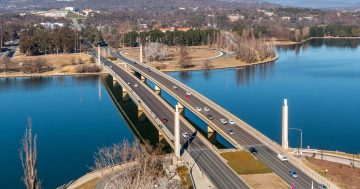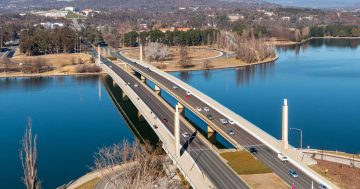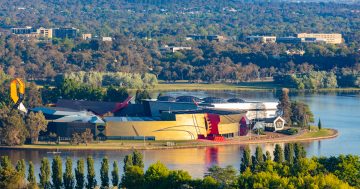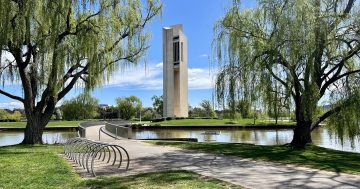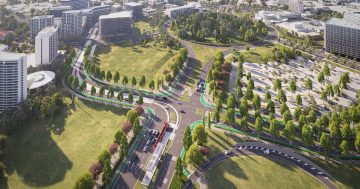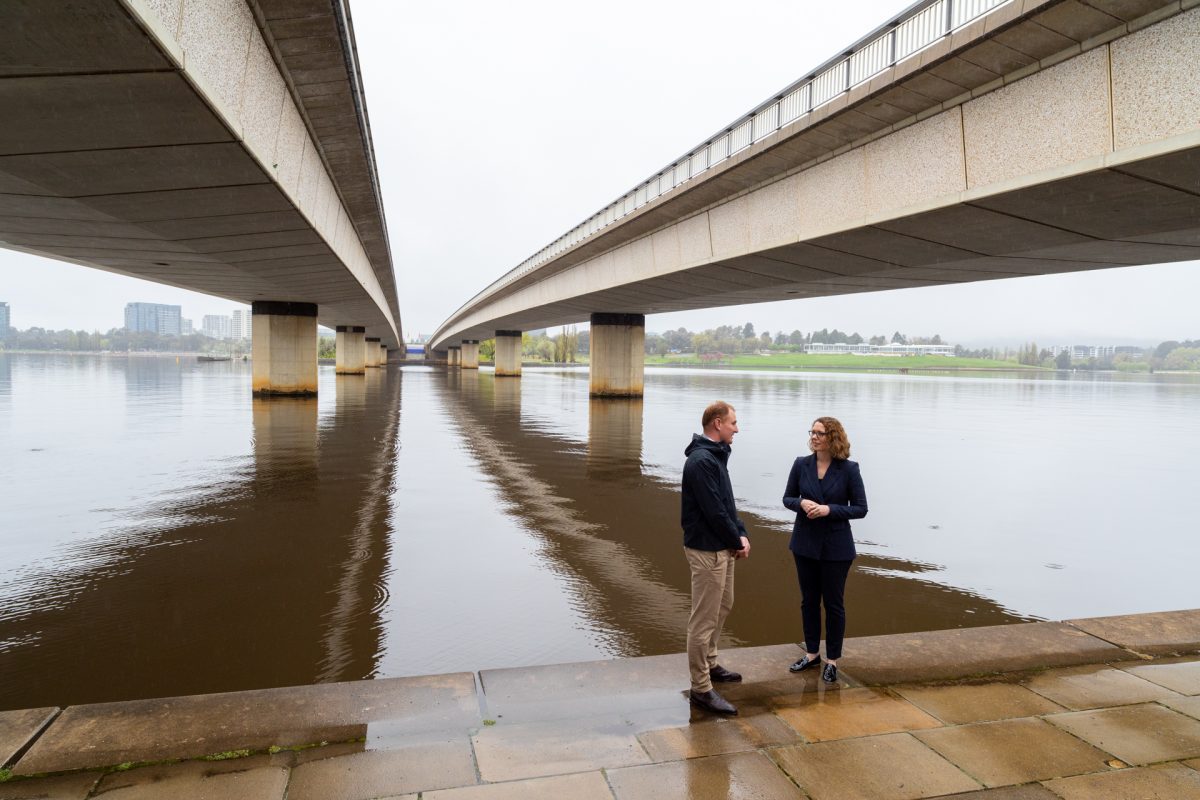
Commonwealth Avenue Bridge Renewal (CABR) Project Director Greg Tallentire and Federal Member for Canberra Alicia Payne underneath the Commonwealth Avenue Bridge. Photo: Michelle Kroll.
The National Capital Authority (NCA) has announced SMEC, the same development group behind Snowy Hydro 2.0 and ARTC’s Inland Rail, will oversee the $137-million renewal of the Commonwealth Avenue Bridge.
The project dates back to 2017 when the 113-metre-long concrete bridge carried an average of 7320 vehicles during the morning peak hour. By 2036, this number is forecast to grow to more than 9000, and that’s without factoring in the Floriade crowds.
For a bridge turning 60 next year, NCA Chief Executive Sally Barnes said it’s time for an upgrade.
“All of the assets are reaching about 60 years old due to the history of the city … and this seems to be the age when we all need a bit of botox,” she said. “They’re all needing that next level of technology.”
The shared paths no longer adhere to Australian standards, and how they’re used has changed as Canberrans embrace more active means of travel.
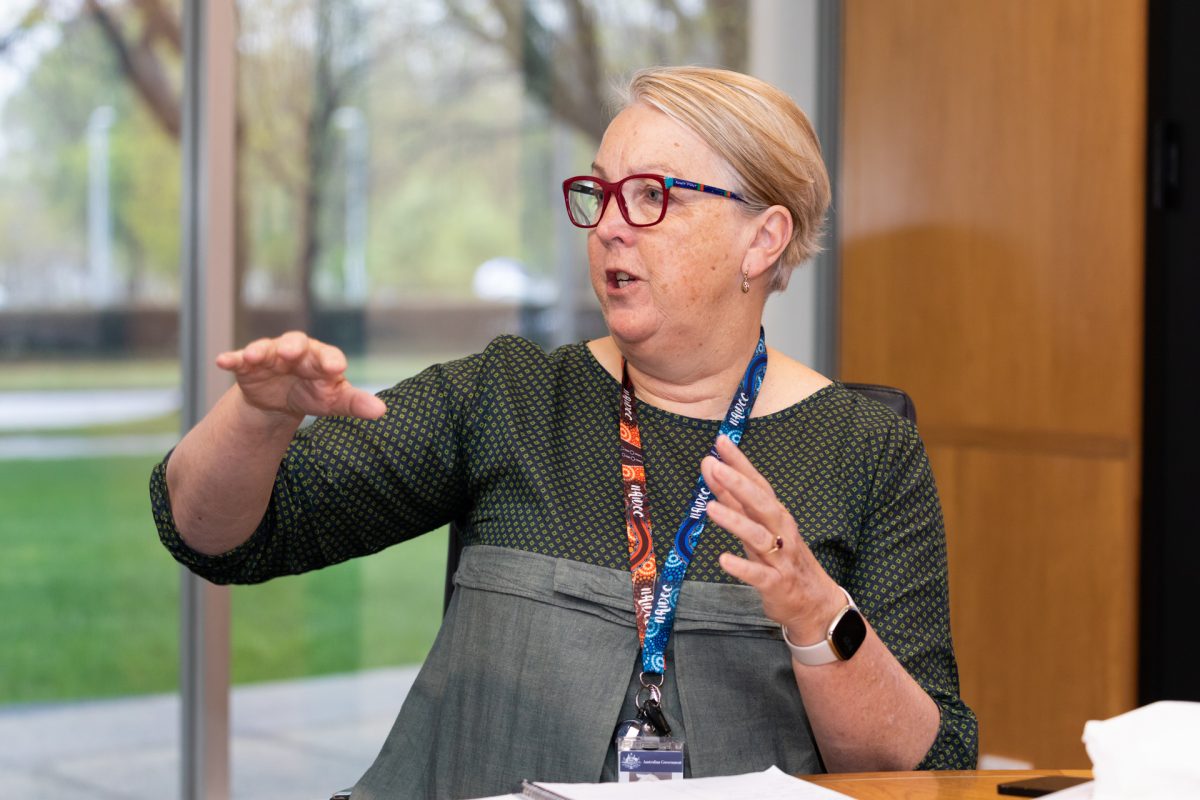
NCA Chief Executive Sally Barnes. Photo: Michelle Kroll.
The cars have also put on weight. A 1963 EJ Holden weighed 1130 kg while a modern Ford Ranger tips the scales at 2230 kg and Tesla Model 3 up to 1850 kg.
During regular inspections, NCA workers discovered the extra stress was accelerating wear and tear in the bridge structure.
The works will include strengthening the structure with more cables and concrete, doubling the width of the footpaths and expanding the road lanes. There’ll also be some dividers to keep cyclists and pedestrians safely apart.
The centre space will be left for the ACT Government’s future light-rail bridge, which is also federally funded.
It’s not the first time a bridge in the area has received vital updates.
Before Lake Burley Griffin came along in 1964, the area was a floodplain for Molonglo Creek. The first bridge was built to cross this in 1916, three years after Canberra was locked in as the new national capital.
However, the floodplain lived up to its name a few years later and a second bridge had to be built in 1924, this time a more solid, timber-truss design. The flood waters came again and more reinforcement was needed.
By 1959, it was time for one bridge to rule them all. Designs were submitted by the now-defunct National Capital Development Commission (NCDC) in 1959, and a British firm, Maunsell and Partners, won the tender.


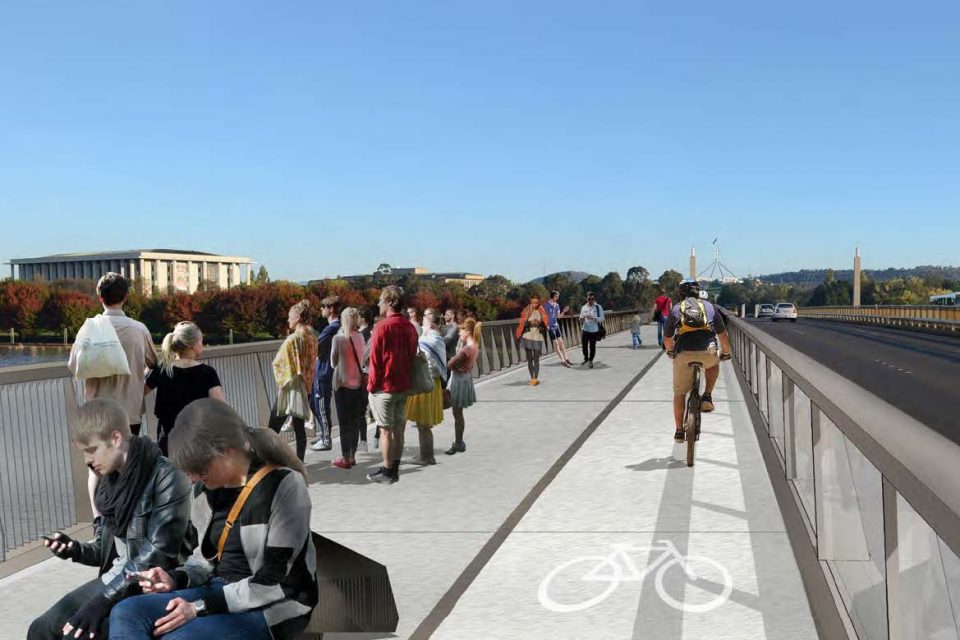

NCA Commonwealth Avenue Bridge Renewal (CWAB) Project Director Greg Tallentire delved into the history of the bridge for the business case. He said a few alterations had to be made when Maunsell and Partners arrived onsite.
“The bridge was designed to British requirements, but they came out here and realised the heat and humidity was much higher.”
To meet the demands, pre-stressed concrete was chosen, reinforced with steel and epoxy resin.
From there, the construction – overseen by Sir Manuel Richard Hornibrook (also behind the complex roof shells on the Sydney Opera House) – was a breeze.
“It was built before the lake was filled, so they didn’t have to deal with torrents of water underneath,” Mr Tallentire said.
When the bridge opened in 1963, it was described as “the finest building in the National Capital” by Prime Minister Robert Menzies.
The bridge also cleverly incorporates service pipelines for discreetly conveying sewerage and water from one side of the lake to the other. The eagle-eyed will note the southeast decorative pylon is actually a vent, and the others are simply there to match.
The bridge also has ceremonial significance as a scene for royal tours, convoys and protests. And under the north and south abutments of Commonwealth Avenue Bridge are a pair of two-tonne historic stones from Waterloo Bridge in London.
Mr Tallentire said these were gifted by the British government when the granite Waterloo Bridge over the Thames was demolished in 1942.
“Stones from this bridge were presented to Australia and other countries as a sign of the link between Britain and the Commonwealth.”
For many years, Mr Tallentire said the inside edge of the two spans was originally marked by a concrete lip, “because it was thought high enough no car could mount it”.
“But with the rise of trucks, it was realised something could actually mount the curb and go over the edge into the lake,” he said.
“Over the years, there have been a lot of updates like that. We’re now wanting to make it cohesive.”



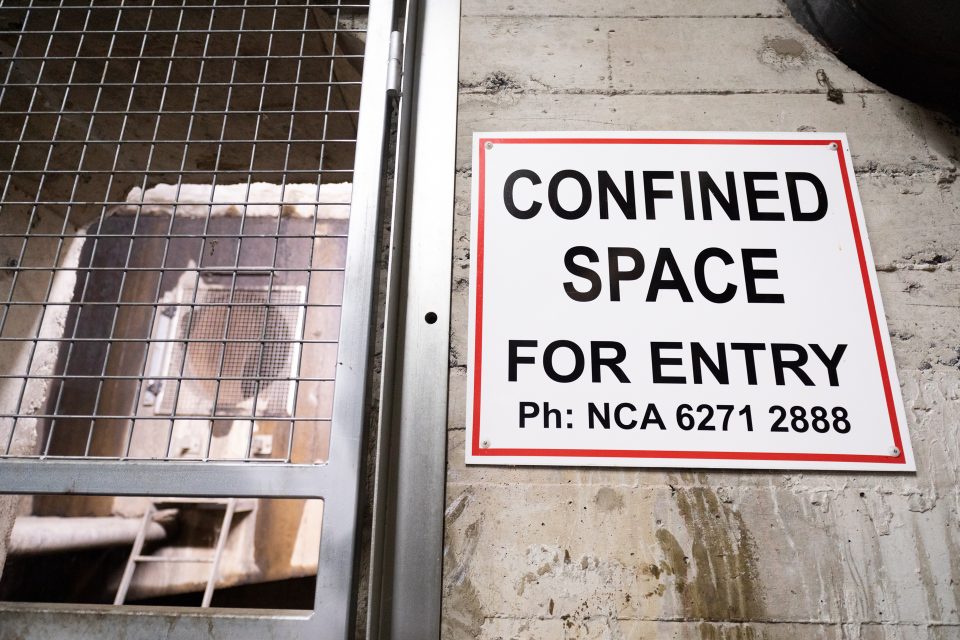
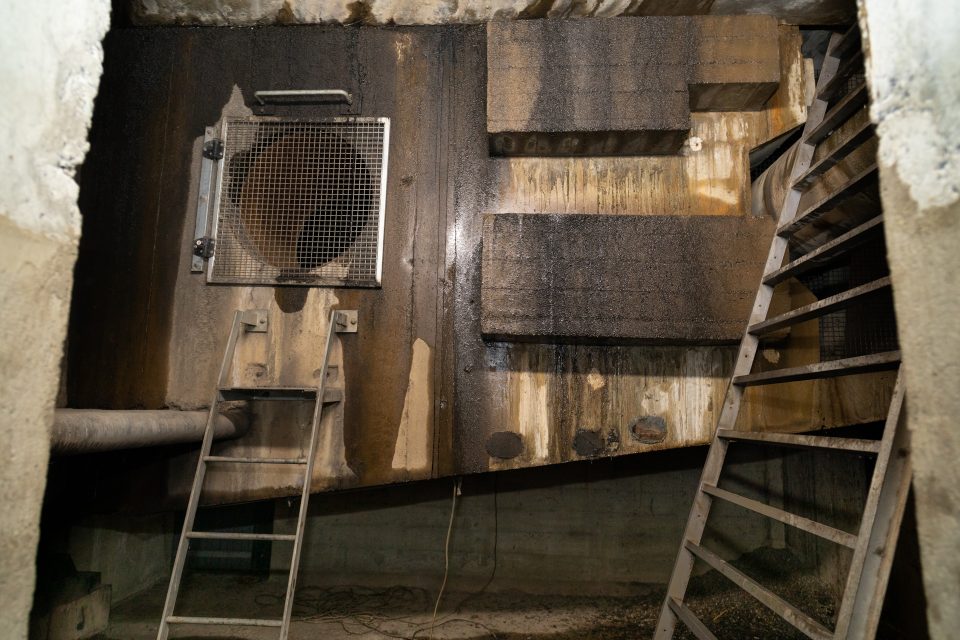
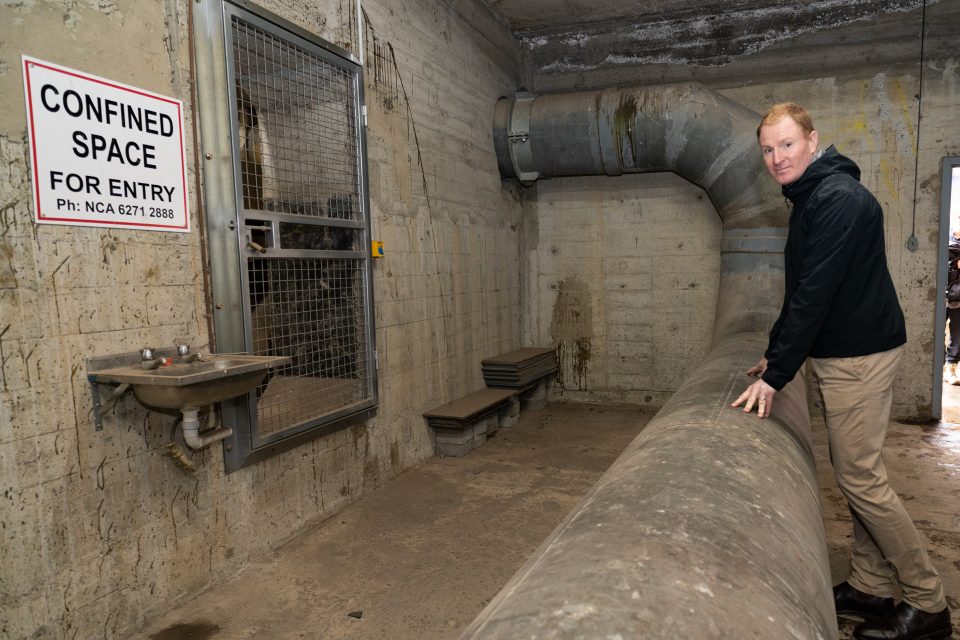
The annual NCA budget covers regular maintenance, but for major upgrades like this, they have to go to the Federal Government to request extra funding. The $137 million was allocated in January 2021.
Because the bridge also falls within the National Triangle, plans have to pass through a Parliamentary Committee before any sod is turned.
Mr Tallentire said the NCA and SMEC will embark on environmental impact assessments and traffic studies.
“The design is expected to take 10 months to finalise, and the project will commence in late 2023.”
The work will be done in stages to minimise traffic disruptions and keep the lake open. The plan is for the entire project to be wrapped up by the time the raising of London Circuit is finished in late 2024.













